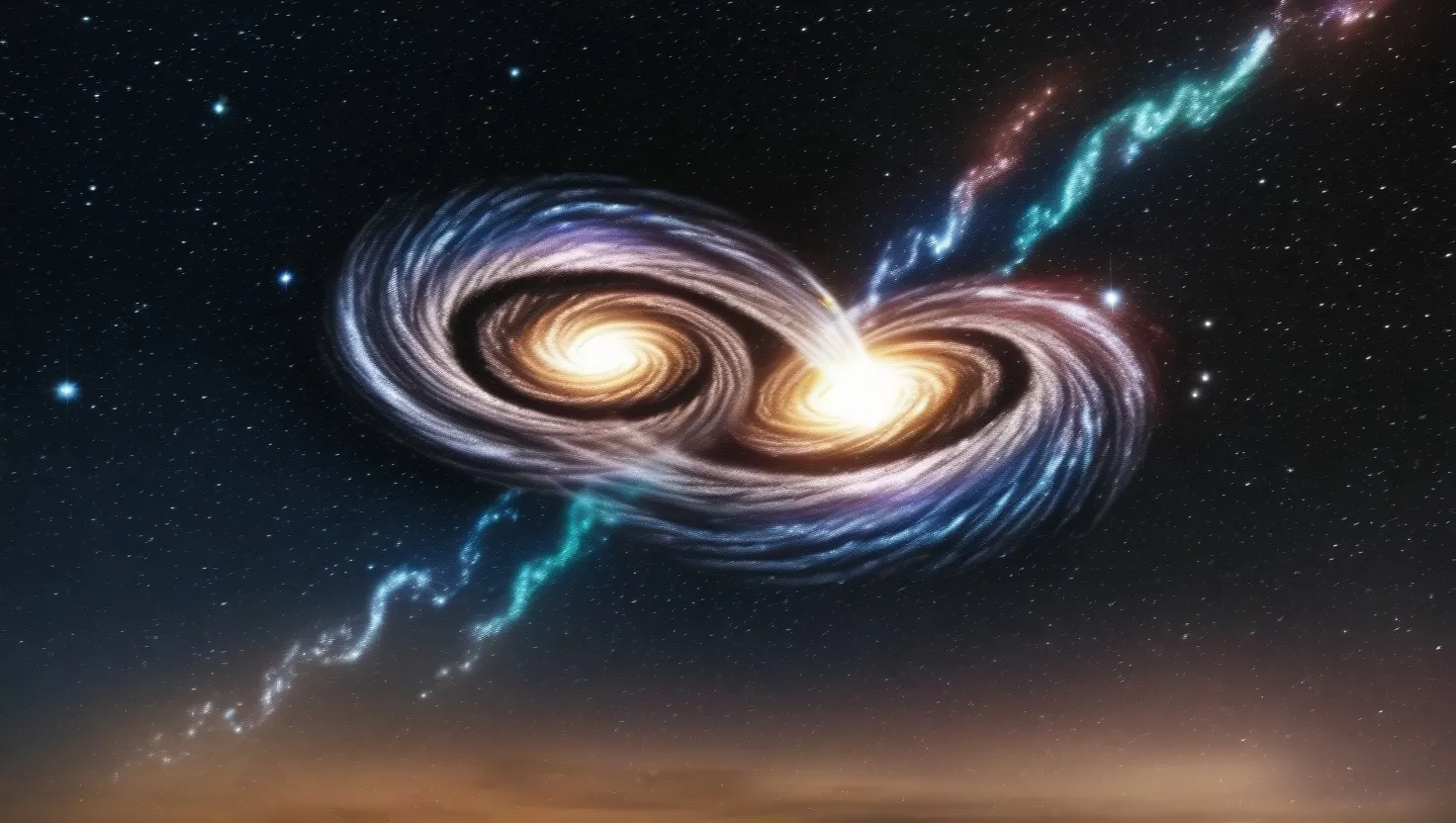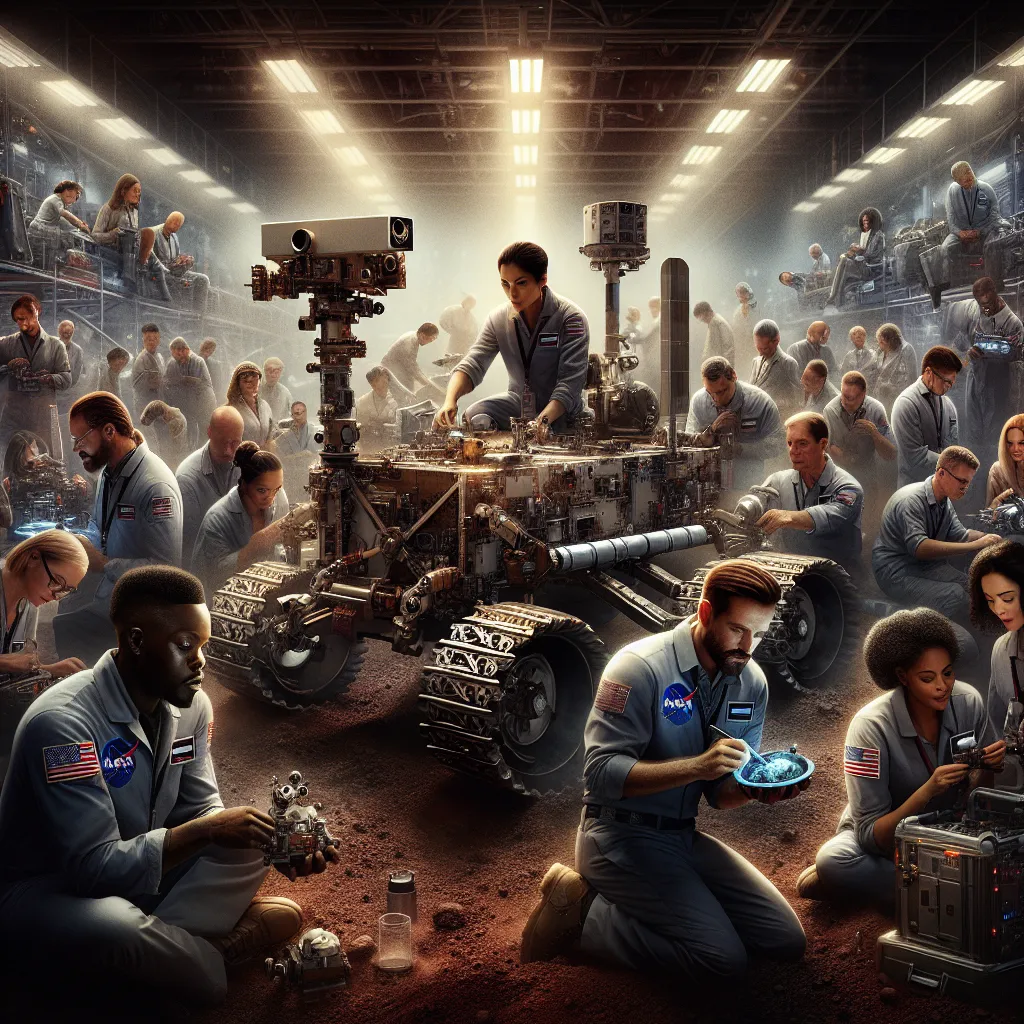As I sit here, pondering the vast expanse of the universe, I am reminded of the profound words of Albert Einstein: “The important thing is not to stop questioning. Curiosity has its own reason for existence.” This curiosity has driven scientists to some of the most astounding breakthroughs in recent history, particularly in the field of gravitational wave astronomy.
Binary Black Hole Mergers
Imagine two massive black holes, each with a mass several times that of our sun, spiraling towards each other in a cosmic dance. This is not a scene from a science fiction movie, but a real event that has been observed and studied. The detection of gravitational waves from binary black hole mergers marked the beginning of a new era in astrophysics. These events are so powerful that they distort the fabric of spacetime, sending ripples that can be detected millions of light-years away.
The first such detection was made in 2015, and it was a moment of pure elation for the scientific community. As Kip Thorne, one of the pioneers in this field, put it, “The first detection of gravitational waves was a culmination of nearly 50 years of effort.” These mergers not only confirm a key prediction of Einstein’s theory of general relativity but also provide insights into the properties of black holes, such as their masses and spins.
Neutron Star Collisions
While black hole mergers are awe-inspiring, the collision of neutron stars offers a different kind of cosmic spectacle. Neutron stars are the dense remnants of massive stars that have undergone a supernova explosion. When two neutron stars collide, the event is so energetic that it releases a burst of electromagnetic radiation, including gamma rays, X-rays, and even visible light.
The first observed neutron star collision, known as GW170817, was a landmark event. It was the first time scientists had observed a cosmic event in both gravitational waves and light. This multi-messenger approach allowed researchers to pinpoint the source of the gravitational waves and study the aftermath of the collision in unprecedented detail. As David H. Reitze, executive director of the LIGO Laboratory, noted, “This detection opens the window of a long-awaited ‘multi-messenger’ astronomy.”
Multi-Messenger Astronomy
The term “multi-messenger astronomy” might sound like jargon, but it represents a revolutionary shift in how we study the universe. By combining gravitational wave observations with electromagnetic data, scientists can gain a more complete picture of cosmic events. This approach is akin to watching a movie with both sound and visuals – each enhances the other, providing a richer experience.
Multi-messenger astronomy has already led to several groundbreaking discoveries. For instance, the observation of GW170817 allowed scientists to study the properties of neutron stars in ways that were previously impossible. It also provided evidence for the production of heavy elements, such as gold and uranium, in these cosmic collisions.
Primordial Gravitational Waves
Now, let’s venture into the very early universe, a time when the cosmos was still in its infancy. Primordial gravitational waves are ripples in spacetime that date back to the Big Bang itself. Detecting these waves would offer a glimpse into the universe’s first fraction of a second, a period known as the inflationary era.
While we have not yet directly detected primordial gravitational waves, the search is ongoing. Projects like the North American Nanohertz Observatory for Gravitational Waves (NANOGrav) are monitoring the “ticking rates” of pulsars – extremely dense, rotating stars – to detect the subtle distortions caused by these ancient waves. If detected, these waves could reveal secrets about the universe’s earliest moments and the fundamental laws of physics that governed them.
Continuous Gravitational Waves
Imagine a violin string vibrating continuously, producing a steady note. In the universe, there are sources that emit continuous gravitational waves, rather than the transient signals from mergers. These sources could include rotating neutron stars or black holes with asymmetrical masses.
Detecting continuous gravitational waves is a challenging task, akin to finding a steady hum in a noisy environment. However, the payoff could be significant. Continuous waves could provide insights into the internal structure of neutron stars or the behavior of black holes over long periods.
The Future of Gravitational Wave Astronomy
As we continue to explore the universe through gravitational waves, we are not just expanding our knowledge; we are also challenging our current understanding. Each new detection raises more questions than it answers. For instance, what can the merger of a neutron star with a mysterious “mass-gap” object tell us about the evolution of binary systems?
The journey into gravitational wave astronomy is a testament to human curiosity and the relentless pursuit of knowledge. As we delve deeper into the cosmos, we are reminded of the words of Carl Sagan: “Somewhere, something incredible is waiting to be known.”
So, what lies ahead? Will we soon detect primordial gravitational waves, offering a window into the universe’s earliest moments? Or will the next big discovery come from the continuous hum of rotating neutron stars? The universe, as always, holds its secrets closely, but with each breakthrough, we edge closer to understanding its grand tapestry.
In this quest, we are not just scientists; we are storytellers, weaving together the threads of data and theory to create a narrative of the cosmos. And as we continue this journey, we are left with a simple yet profound question: What other secrets await us in the vast expanse of spacetime?






